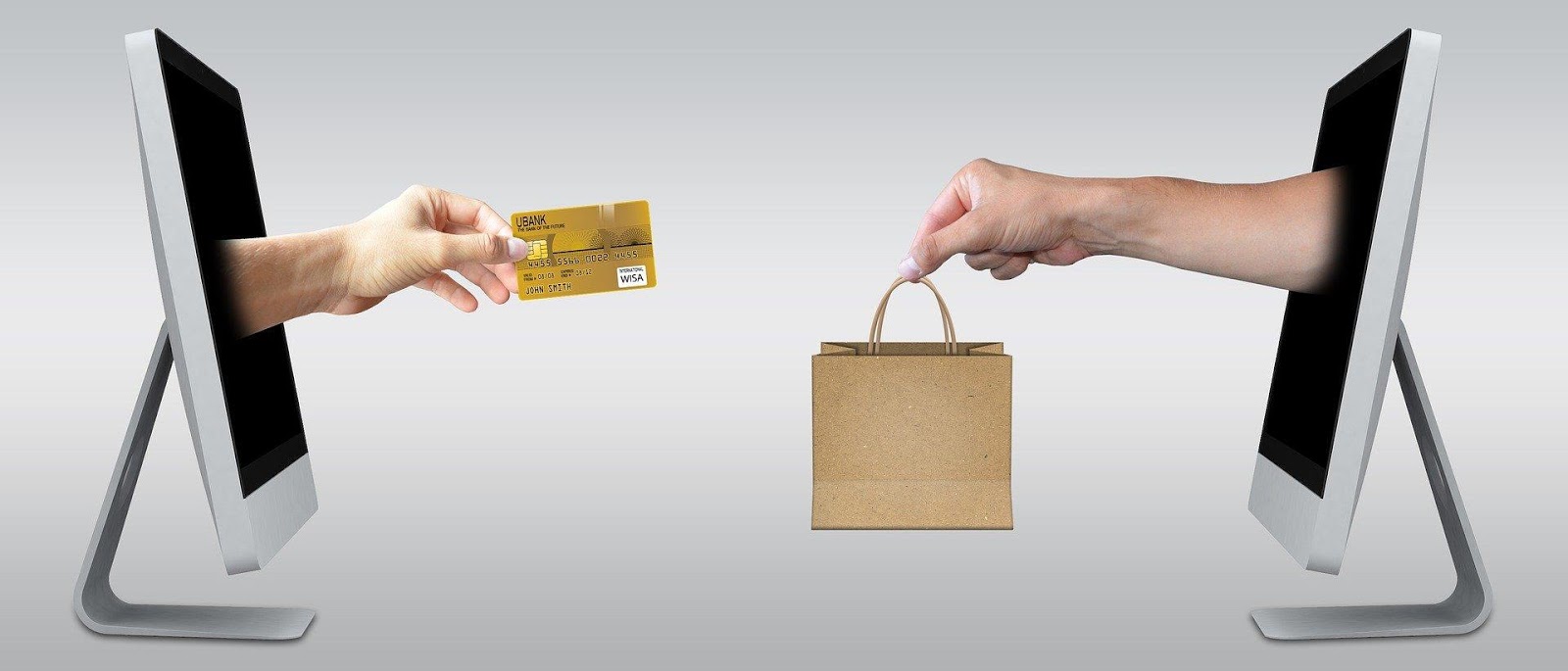Categorize
Join the Craze How Cryptocurrency Is Shaping Online Games

If you’re playing a game online, you might have noticed the trend of using cryptocurrency to make purchases. From buying virtual items to investing in virtual economies, it’s become increasingly popular.
The craze has even seeped into some of our favorite online games. In fact, cryptocurrency is now shaping the way we play many of them. But what does this mean for you and your gaming experience?
It’s time to explore the world of games that accept cryptocurrencies as payment, how it’s changing the gaming industry, and why it might just be the future of online gaming. Whether you’re a seasoned gamer or new to the game, join us as we get up to speed on this exciting technology!
An Overview of Cryptocurrency and Online Games
Cryptocurrency has been gaining buzz lately, and now it’s made its way into the gaming world. Online games are now becoming more accessible for players to purchase items and resources with cryptocurrency– letting you join in on the craze.
But wait: what exactly is cryptocurrency? Cryptocurrency is a digital currency that uses cryptography as security to manage transactions, secure financial data, and control the creation of additional units of currency. Cryptocurrency can also be used to facilitate anonymous transactions, so buyers and sellers remain anonymous.
Using cryptocurrency in online games is the next big thing for gamers around the world. There’s no need for credit cards or bank details– there’s no risk of losing your cash due to theft or fraudulence. You can purchase virtual items such as weapons and characters with cryptocurrency, as well as sell items that you have collected in-game for real money with ease using these online wallets.
Advantages of Using Cryptocurrency in Online Games
If you’ve ever been curious about all the craze concerning cryptocurrency and its impact on online gaming, here’s your chance to find out. So, why should you join the bandwagon? Cryptocurrency offers some serious advantages over traditional payment methods or virtual currencies.
First, it is secure and anonymous. Cryptocurrency payments are based on a distributed ledger system that records all transactions, making it extremely difficult for hackers to steal or access your money. On the other hand, in terms of anonymity, cryptocurrency offers users a degree of privacy that isn’t possible with traditional payment methods.
Cryptocurrency also enables near-instantaneous transactions. Transactions made using cryptocurrencies are processed faster than those made with traditional payment methods such as credit cards as fewer intermediaries are involved in the process. This speed lets you start playing much sooner than with other payment options.
Finally, cryptocurrency helps developers cut costs related to transaction fees and taxes since there is no need for third-party services such as banks or credit card companies. As a result, developers can pass those savings on to their players in the form of competitive gaming options and discounts on purchases made in-game stores.
Challenges Faced in Implementing Cryptocurrency in Gaming Platforms
Cryptocurrency has come a long way, but there are still some major challenges in implementing it in gaming—particularly from a financial point of view. Here are some of those problems:
Regulatory Compliance
The cryptocurrency market is notoriously volatile and regulatory frameworks for digital assets vary from country to country. This can make it difficult for gaming companies to adopt and implement cryptocurrency-based solutions that meet the legal requirements of all their users.
Currency Divergence
Though Bitcoin is the most popular form of cryptocurrency, there is still a wide range in terms of availability and acceptance around the world. Companies need to consider how different forms of cryptocurrency will interact with each other and how they can be integrated into existing platforms.
Accessibility
Because of the technical complexity associated with cryptocurrency, many people are still unable to access or use it as part of their gaming experience. Companies must develop an interface that makes cryptocurrencies easier for players to access, use, and transact with other players or game developers.
While these challenges remain daunting, tech companies are committed to finding solutions through research and development to make sure that all gamers can enjoy the benefits of using cryptocurrency without having to worry about the specifics.
Security Risks and Solution When Using Cryptocurrency for Gaming
Another thing you might not know is that when using cryptocurrency for gaming, there are certain security risks.
Security Risks
Cryptocurrency can be subject to theft, volatility, and scammers looking to manipulate the system. With such a technology, accountability is key so that players know where their money is going, who has access to it, and if it’s being used for the intended purpose.
Also, regulators are still catching up when it comes to cryptocurrencies. This makes them more vulnerable to hackers due to high-profile news or legal issues that can drive up the value of a particular cryptocurrency. As a result, gamers must be vigilant about their assets and take extra steps for protecting their investments.
Solutions
Fortunately, there are solutions available for ensuring the safety of funds stored in digital assets. It’s important to do your research and find reliable cryptocurrency wallets and custodial services. Additionally, gamers should consider using two-factor authentication methods such as biometric scanning or voice recognition algorithms for added security. By understanding these key elements of online gaming with cryptocurrencies, you can play knowing your money is safe and secure.
Types of Cryptocurrency Used for Gaming
These days, cryptocurrency is being used in gaming more and more. What are some of the types of cryptocurrency commonly used for gaming?
Bitcoin
The first, and most well-known, cryptocurrency is Bitcoin. This digital currency has been around since 2009, and it’s a decentralized system, meaning it’s not managed by a single bank or government — it’s global.
Because Bitcoin is so popular with gamers, companies have developed apps that make it easier to use in gaming. For example, apps allow players to quickly “gamify” transactions within games like poker or fantasy sports. In addition to that, gamers may also earn Bitcoin for tasks such as playing certain levels in a game.
Ethereum
Ethereum is another well-known cryptocurrency used for gaming. It’s been around since 2015 and it also offers users apps that make making payments and transactions easier within games. It’s considered faster than Bitcoin and its wider acceptance provides an additional incentive for gamers to use it.
Litecoin
Finally, there’s Litecoin which was created in 2011 as an alternative to other digital currencies like Bitcoin. Known for its faster transaction speeds than both Ethereum and Bitcoin, Litecoin is becoming increasingly popular with gamers who want their payments processed quickly — replacing traditional methods like credit cards or PayPal.
So if you’re looking for a way to join the craze of using cryptocurrency for online gaming then you have several options – each offering unique benefits depending on your needs!
Where to Start Playing With Cryptocurrencies
If all this talk of cryptocurrency has you convinced that you should jump in, where do you start? The first step is finding a platform to play on and sign up for an account. Then you’ll need to purchase a cryptocurrency, such as Bitcoin or Ethereum, and finally link your wallet—containing the cryptocurrencies—to the platform’s respective wallet. Don’t worry if it sounds daunting—it’s actually quite easy when you go through the steps!
The fun part is finding out what type of games to play. Thankfully, there are many games out there that have integrated cryptocurrencies as part of their gameplay. Whether it be collectible card games, simulations, or even online sports betting, there is something for all game enthusiasts out there.
Let us look at some genres that use cryptocurrencies:
- Collectible Card Games (CCGs): In these types of games players typically buy cards in the auction house, with Ether being the common currency used in Ethereum-based CCGs such as Gods Unchained and Spells of Genesis. These physical cards are collected using blockchain technology and can also be used in online tournaments.
- Simulation Games: These types of games often incorporate strategies with economic parts that require players to mine cryptocurrency while they build spaceships or defend their planets from enemy invasions – an example being Miner Simulator by BitPlayground which uses Bitcoin Cash (BCH).
- Online Sports Betting: Cryptocurrency sportsbooks have been gradually gaining traction among users due to their improved security measures on transactions and low transaction costs – an example being 1xBit which offers multiple currencies for its betting activities such as Bitcoin (BTC).
Conclusion
Cryptocurrencies don’t just provide you the opportunity to play better or make more money, they also add a whole new layer of security for those who are playing. As a result, gamers can be sure that their funds are safe, and that their data is secure—all while having the ability to make money with the new virtual currency.
Cryptocurrencies also bring a whole new level of entertainment and fun to gaming, giving gamers a whole new way to interact with others, win rewards, and test their skills and strategies. With so many advantages, it’s no wonder why cryptocurrency is becoming increasingly popular in online gaming.
So why not join the craze? With cryptocurrency in the mix, you can experience a whole new world of online gaming like never before. Take the plunge and start playing today!
Sports & Games
The Ultimate Guide to Funny Fantasy Football Names: Add a Touch of Humor to Your League

Fantasy football is more than just a game; it’s a cultural phenomenon that combines sports, strategy, and camaraderie with a healthy dose of competition. As the NFL season kicks off, millions of fans across the globe gather with friends, family, and coworkers to draft their fantasy teams, each hoping to dominate their league and claim the coveted championship trophy. But before the season gets underway and the trash talk begins, there’s one crucial task that every fantasy football manager must tackle: choosing the perfect team name.
Your fantasy football team name is more than just a label on the league standings; it’s a reflection of your personality, your sense of humor, and your creativity. While some managers opt for straightforward, intimidating names that strike fear into their opponents, others prefer to lighten the mood with a funny, clever, or downright ridiculous team name that will leave everyone in the league chuckling. After all, what’s better than earning the admiration of your peers for both your football acumen and your witty wordplay?
Whether you’re a seasoned fantasy football veteran or a rookie looking to make a splash in your first season, coming up with a funny fantasy football name can be a challenge. It’s not just about being clever; it’s about striking the right balance between humor, football references, and sometimes, a bit of pop culture. The best funny fantasy football names often play on puns, player names, team rivalries, or current events, making them relevant, memorable, and most importantly, hilarious.
In this comprehensive guide, we’ll explore the world of funny fantasy football names, offering inspiration and ideas to help you craft the perfect moniker for your team. We’ll delve into various themes and categories of funny names, from puns based on player names to creative pop culture references and everything in between. Whether you’re aiming for a name that’s subtly witty or one that’s laugh-out-loud funny, this guide has got you covered.
Why a Good Fantasy Football Name Matters
Before we dive into the list of funny fantasy football names, it’s worth taking a moment to consider why choosing the right team name is so important. In many ways, your fantasy football team name sets the tone for your entire season. It’s the first thing your league mates will see, and it’s how they’ll refer to you throughout the year. A well-chosen name can make you the talk of the league, earning you respect (or at least a few laughs) even before the first snap of the season.
A funny fantasy football name also adds an element of fun to the league. While the competition can be intense, fantasy football is ultimately a game meant to be enjoyed. A humorous team name helps to keep the mood light, reminding everyone that even amid heated rivalries, it’s okay to have a little fun. Plus, if your team name can make someone laugh, you’ve already won a small victory, regardless of how the season plays out.
Finally, a funny and clever name can also serve as a form of intimidation. If your leaguemates see that you’ve put thought and creativity into your team name, they’ll know you’re serious about the game—even if you’re not taking yourself too seriously. It’s all part of the psychological warfare that makes fantasy football so much fun.
How to Create a Funny Fantasy Football Name
Creating a funny fantasy football name is both an art and a science. It requires a blend of creativity, humor, and football knowledge. Here are a few tips to help you brainstorm the perfect name:
- Start with Player Names: One of the most popular approaches to creating a funny fantasy football name is to use puns or plays on the names of well-known NFL players. Whether it’s a current star like Patrick Mahomes or a legendary figure like Peyton Manning, player names offer endless possibilities for wordplay.
- Incorporate Football Terms: Football is full of jargon and terminology that can be cleverly repurposed in a fantasy team name. Think about words like “touchdown,” “interception,” “Hail Mary,” and “end zone.” These terms can be combined with other words or concepts to create a humorous name.
- Use Pop Culture References: Pop culture—whether it’s movies, TV shows, music, or memes—is another rich source of inspiration for funny fantasy football names. By blending pop culture references with football themes, you can come up with a name that’s both funny and relevant.
- Consider Team Rivalries: If you’re part of a fantasy football league that’s centered around a particular NFL team, you might want to consider incorporating rivalries into your team name. Poking fun at a rival team or player can add an extra layer of humor (and possibly some friendly trash talk) to your league.
- Keep It Light and Playful: Remember, the goal is to have fun. Avoid names that are overly offensive or inappropriate. A good fantasy football name should make people smile, not cringe. If in doubt, go for humor that’s lighthearted and playful.
- Test It Out: Once you’ve come up with a few potential names, test them out on your friends or league mates to see which ones get the best reaction. Sometimes, the simplest names can be the funniest, so don’t be afraid to go with your gut.
Top Categories for Funny Fantasy Football Names
There are countless directions you can take when coming up with a funny fantasy football name, but some categories are particularly popular. Let’s explore some of the top categories that have inspired hilarious names over the years.
Player Name Puns: One of the most classic approaches to a funny fantasy football name is the player name pun. These names take the names of popular NFL players and turn them into something clever and humorous. For example, “Mahomes Alone” (a play on “Home Alone”) or “Dak to the Future” (a play on “Back to the Future”) are both creative and funny ways to incorporate player names into your team’s identity. These names work especially well because they instantly connect with other football fans who know the players being referenced.
Pop Culture Mashups: Pop culture references are another rich source of inspiration for funny fantasy football names. By blending football with something from movies, TV shows, or music, you can create a name that’s both funny and relatable. For example, “Game of Throws” (a play on “Game of Thrones”) or “Teenage Mutant Ninja Bortles” (a play on “Teenage Mutant Ninja Turtles”) are both examples of pop culture mashups that are sure to get a laugh. These names work well because they tap into the shared knowledge and interests of your league, making them instantly recognizable and funny.
Football Terminology Twists: Football is full of terms and jargon that can be twisted and repurposed into funny fantasy football names. Whether it’s something as simple as “End Zone Dance” or a more complex play on words like “Turn Your Head and Coughlin” (a play on the name of former NFL coach Tom Coughlin), these names show that you know your football and aren’t afraid to have a little fun with it. These names work well because they take something familiar and put a humorous spin on it, making them both clever and memorable.
Team Rivalry Riffs: If your fantasy football league is centered around a particular NFL team or region, you might want to consider incorporating team rivalries into your name. For example, if you’re a New England Patriots fan, you might go with something like “Brady Gaga” (a play on “Lady Gaga”) to poke fun at rival fans. These names work well because they add an extra layer of humor to the league, especially if your league-mates are fans of rival teams.
Silly and Absurd Names: Sometimes, the best funny fantasy football names are the ones that are just plain silly. These names don’t have to be clever or witty; they just have to make people laugh. For example, “The Brady Bunch” and “The Gronks of Wrath” are both examples of names that are more about being silly than anything else. These names work well because they’re lighthearted and fun, reminding everyone that fantasy football is supposed to be a good time.
Double Entendres: A double entendre is a phrase or word that has two meanings, one of which is usually humorous or risqué. These types of names can be particularly funny in a fantasy football context. For example, “Le’Veon a Prayer” (a play on “Living on a Prayer”) or “It’s Always Sunny in Philadelphia” (a play on “It’s Always Sunny in Philadelphia”) are both examples of double entendres that add a touch of humor to your team name. These names work well because they play on words in a way that’s both clever and funny, making them memorable and entertaining.
Seasonal and Topical Names: Fantasy football often coincides with the NFL season, which means there are plenty of opportunities to create names based on current events or seasonal themes. For example, “Fall of Fame” or “Winter is Coming” are both examples of names that play off the time of year or current events. These names work well because they’re timely and relevant, making them a fun addition to your league.
Creating a Fantasy Football Name That Stands Out
Now that we’ve explored some of the top categories for funny fantasy football names, it’s time to start brainstorming your own. When creating a name, remember to keep it fun, lighthearted, and true to your personality. Whether you’re going for a clever pun, a pop culture reference, or just something silly, the most important thing is that it makes you and your league mates smile.
If you’re struggling to come up with a name, don’t be afraid to look for inspiration from other sources. There are plenty of websites and forums dedicated to fantasy football names, where you can find lists of funny and creative ideas. You can also ask your friends or league mates for suggestions; sometimes, the best names come from a collaborative effort.
Once you’ve come up with a few potential names, take some time to test them out. Say them out loud, write them down, and see how they look on your league’s leaderboard. The right name should feel like a good fit for your team and your personality, and it should be something you’re proud to display throughout the season.
Frequently Asked Questions (FAQs) About Funny Fantasy Football Names
What makes a good fantasy football name?
A good fantasy football name is clever, funny, and memorable. It should reflect your personality and sense of humor, and it should be something that makes you and your league mates smile. The best names often incorporate puns, pop culture references, or football terminology, but the most important thing is that it’s a name you enjoy and feel confident using throughout the season.
Can I change my fantasy football name mid-season?
In most fantasy football leagues, you can change your team name at any time during the season. However, it’s usually a good idea to pick a name you’re happy with from the start, as constantly changing your name can be confusing for your league mates. If you do decide to change your name mid-season, make sure it’s still something funny and memorable that reflects your team’s identity.
What are some examples of funny fantasy football names?
There are countless examples of funny fantasy football names, but some popular categories include player name puns (e.g., “Mahomes Alone”), pop culture mashups (e.g., “Game of Throws”), and football terminology twists (e.g., “Turn Your Head and Coughlin”). The best names are usually clever, relevant, and lighthearted, so don’t be afraid to get creative and have fun with it.
Should I choose a fantasy football name based on my favorite NFL team?
Choosing a fantasy football name based on your favorite NFL team can be a great way to show your team pride and add an extra layer of fun to your league. However, it’s not a requirement, and plenty of great fantasy football names have nothing to do with specific teams. If you’re a die-hard fan of a particular team, go ahead and incorporate that into your name, but don’t feel limited by it.
Is it okay to use a fantasy football name that’s a little risqué?
While a little bit of risqué humor can be funny, it’s important to remember that fantasy football is a game meant to be enjoyed by everyone in your league. If your league mates are comfortable with it, a slightly risqué name can be fine, but it’s usually best to keep things lighthearted and avoid anything that might be offensive or inappropriate. The goal is to have fun and make people laugh, so when in doubt, err on the side of caution.
Conclusion
Choosing the right funny fantasy football name is an important part of the fantasy football experience. Whether you’re looking for a clever pun, a pop culture reference, or just something silly, the key is to have fun and pick a name that reflects your personality. With so many options, from player name puns to pop culture mashups, there’s no shortage of inspiration for creating a name that will make your league mates smile. So take your time, get creative, and enjoy the process of finding the perfect name for your fantasy football team. After all, a great name is just the beginning of what’s sure to be an exciting and memorable fantasy football season.
Sports & Games
The Ultimate Live Gaming Experiences You Can’t-Miss

The latest trends in gaming usually come on the back of technological advancements. This has been especially true over the last decade, as new technology steers the way for the latest trends. First came mobile gaming, boosted on the back of expanded 5G networks. Lately, there’s a stronger focus on AR as a more viable route for developers compared to VR thanks to new releases like the Apple Vision Pro.
The further tech boundaries are pushed, the more unique experiences gamers have at their fingertips. Along with developments like 5G networks and viable AR glasses, one huge hit in gaming is the live experience. Live gaming is a concept that focuses on live-streamed content, from live casino games to cloud gaming services.
Live gaming has taken off because it enhances the gaming experience and, potentially, could lessen the demands of gaming hardware. Plus, within entertainment, the more immediacy involved, the better the experience for the consumer. But what does live gaming look like in 2024? And how might it change in the coming years? Let’s take a look at some of the best experiences available now and how they’ll evolve.
Live Casinos
Within the context of the iGaming industry, live gaming revolves around live casino trends. Those who have spent a bit of time playing at an online casino have likely seen live dealer titles advertised. These types of games allow players to interact with a real-life dealer who is live-streamed straight to their device.
This is by far one of the most immersive and interactive ways to game, not only within the iGaming industry but throughout entertainment. Already, live dealer titles have helped spur interest in other types of live casino games, from Football Studio to Dreamcatcher. These titles place a brand new spin on the magic of table games and slots, blending them with the live dealer experience.
Cloud Gaming
Cloud gaming also referred to as live game streaming, is the idea that gamers can stream titles straight to their device—just like watching a movie on Netflix. Rather than owning that particular DVD in terms of hardware, remote viewers simply pay a subscription to watch at any time. Theoretically, this setup could enter the world of gaming.
Already, the Xbox Game Pass has proved that this idea has viability. Sony is still tweaking its PlayStation Plus Premium, as is Amazon’s Luna, which are both competing with Nvidia GeForce Now. However, Netflix has recently entered the cloud gaming arena—which could easily help generate new interest in gaming from subscribers who have only tuned in to watch TV or movies.
The Metaverse
Whether talking about Meta’s metaverse or The Sandbox, these virtual worlds are some of the most cutting-edge in terms of trends, tech, and gaming interests. One of the more unique elements of spending time in a metaverse is the user’s ability to not only play games but also create them.
These gaming experiences, which are still incredibly varied, happen in real-time—no pausing or resets allowed. Whether gaming or creating games, there’s a sense of immediacy. This new type of gaming experience requires quite a bit of hardware, from haptic gloves to headsets. However, it’s one of the most immediate and ‘live’ gaming experiences that’s available now—and it’s only going to become more accessible over the next decade.
Existing games may launch their metaverses, too, providing gamers with a fully immersive experience in a world they know well. Epic Games has already done this with its hit release Fortnite. Though it’s not a fully-fledged metaverse, the Fortnite virtual world can host digital events, including big-name concerts where players can rub elbows and unwind.
Digital & Social
4 Tips for Boosting Your SMB This Fall

Summer is at its end and the air is slowly starting to smell like pumpkin spice. This is the time for changes and hard work. All vacations are over, our batteries are charged and we are ready to roll. The market keeps changing and you need to constantly be in the loop and aware of your business’ position in your particular domain. Regardless of what that position is, there is room for improvement, even at the top, so let us see what can be done to make things even better.
Compare and contrast
Firstly, you must do some research to see where you stand. As we already said, the current situation in the market is ever-changing and even if you think you are up-to-date, check again, just in case. The initial assessment of the state and rank of your business is your step zero in the attempt to improve. Your research should be long and thorough, so do not take it lightly. It is the foundation of everything you do next, and, as you must know, if the foundation turns out to be bad, the whole house can come crashing down. Make notes of the pros and cons you see in the way your competitors do business. If you can “steal” a few good ideas, do it. If something is done right, it should become a standard. On the other hand, when you see room for improvement in your competitors, try to point that out in your own business and be better than them in that particular area. Do this assessment for your top ten competitors and when you make all the notes, it will be your first concrete step towards a real upgrade in your business.
UI and UX upgrades
If one of the things on your to-do list is your UI and UX, you are in for a treat. This is usually a very fun activity where one can express their creativity and let their imagination run wild. Depending on your budget, enthusiasm, and the size of your company, you can do this on your own or you can hire a professional. If you have never dabbled in UI and UX, perhaps it is not best to try now. There are some amazing options for web design in Houston and people usually opt for hiring experts in this situation. The main reason to go with the pros is the fact that there is a lot at stake. UI and UX are the main factors that make a first impression and if you get that wrong, you lose a customer. However, if you are skilled in that particular domain and wish to express your creativity, go for it. You will surely be proud to have your brand and your company decorated by yours truly. On the other hand, if you have the desire and the ideas, but lack skills, you can be involved as an advisor and product owner, just not the actual developer. It will make you happy as you will still be involved in the process.
Leave out the details and keep the gist
While we are on the topic of your website’s appearance, let us also focus on the content. Sure, the looks are what will draw your customers to your website and your business, but the content is what will determine whether they stay or leave. This is why it is equally important to commit to the content of your website, as well as its appearance. People’s attention span is decreasing as the years go by. It is not related to age, but rather the times. Modern times give us less and less free time, more obligations, and a faster life pace. It forces us to multitask and invent quick and easy ways to deal with all the issues our day may bring us. This is why our business representation needs to change to become in accordance with the new times and the pace of life. Nobody wants to read endless paragraphs about the origin of your business. They want it short and to the point. The content on your website should be as concise as possible with many paragraphs separated by white spaces. This will enable a new user to skim the whole page and determine what is important for them to read. It will also do wonders for your business as most users would be thrilled to have the mandatory time spent on your website shortened in the maximum possible way.
Stay human
In this very modern era where everything is automated, we are communicating with ChatGPT every day to get answers and most of our appliances are also talking to us on a daily basis, it is easy to get a bit carried away and think of your audience as tiny robots that bring you money. Certainly, we all need to adapt in order to survive and everyone should accept these technologically miraculous times we live in, however, we should also try to stay human in the most robotic age there ever was. A mixture of both worlds might be the very thing people come to love about your business. Therefore, try to value the loyalty of your customers. Provide special offers and discounts to the ones that really deserve it. Make recommendations based on previous searches and purchases. Remember people’s birthdays and make sure to add little presents to every fifth and tenth order, for instance. Enable customer support that is not a chatbot. Basically, try to take the best of both worlds and this could be your golden ticket to get new customers and keep them.
These are only some suggestions for improving the way you do your digital business. Of course, it is not the only one and all creativity and innovation are more than welcome. When you combine market research and your own ideas, you will already be more than ready to get started on those improvements, regardless of what they may be.
-

 Sports & Games4 years ago
Sports & Games4 years agoLet’s Dive Into To Know about Poe Ninja
-

 News & Entertainment2 years ago
News & Entertainment2 years agoNike reps shoes
-

 Sports & Games4 years ago
Sports & Games4 years agoIs a Toto site required for food verification?
-

 Business & Finance3 years ago
Business & Finance3 years ago10 Best Online Platforms to Buy and Sell Cars in Karachi
-

 Sports & Games4 years ago
Sports & Games4 years agoHow To Get Registered At Track Wrestling Forum
-

 Sales & Marketing3 years ago
Sales & Marketing3 years agoWhat is Amaozn And How It Works?
-

 Categorize1 year ago
Categorize1 year agoCommon Mistakes When Making A Medical Case Study
-

 Technology & Inovation3 years ago
Technology & Inovation3 years agoTop 5 WEBSITE RESELLER

